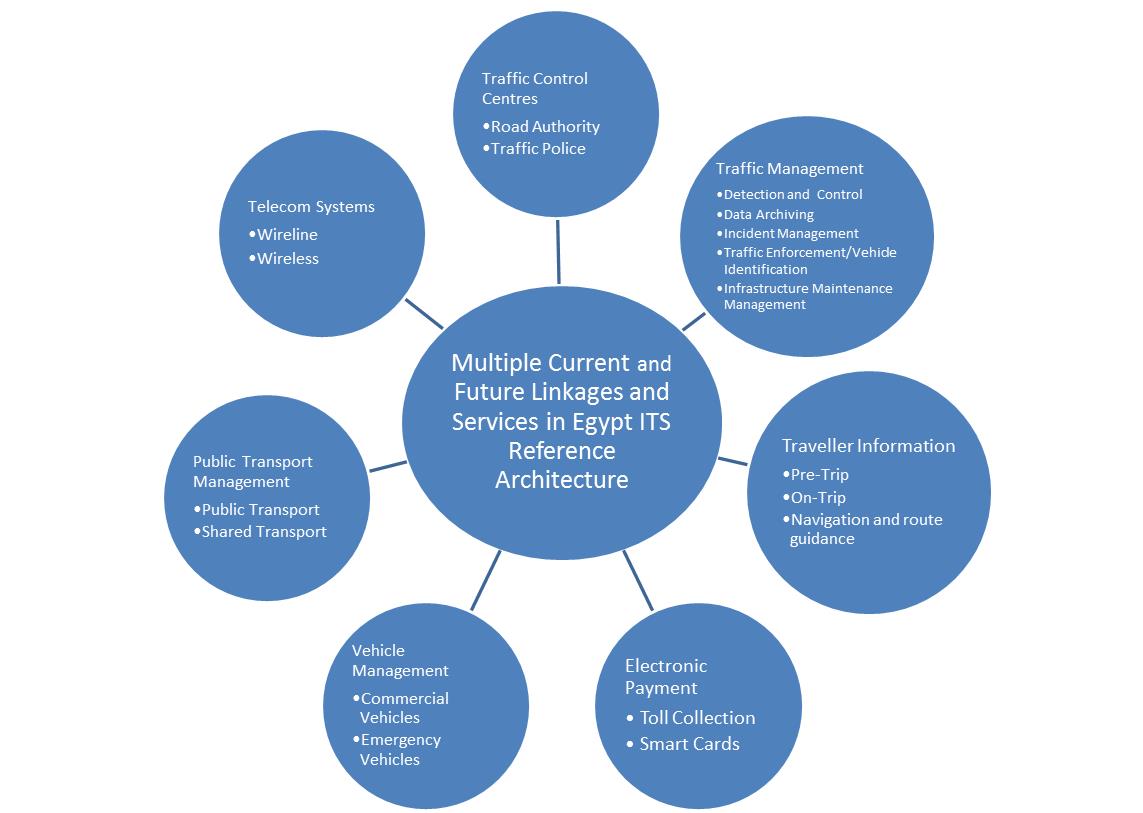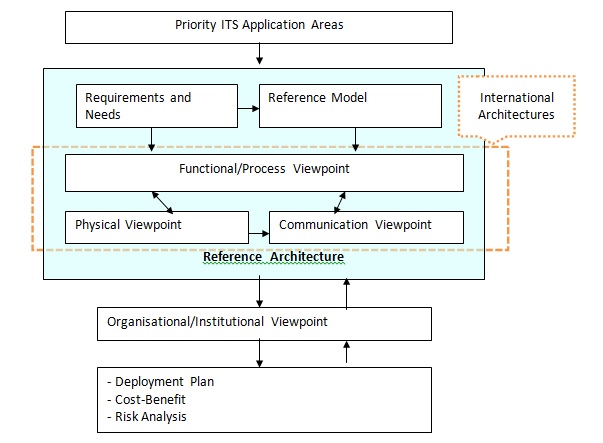
Road Network Operations
& Intelligent Transport Systems
A guide for practitioners!

Road Network Operations
& Intelligent Transport Systems
A guide for practitioners!
An ITS architecture provides an analysis of the technical and organisational requirements in support of a planned approach to ITS at the national or regional level for consistent deployment of ITS. System architecture provides a basis for learning about ITS and reaching consensus among stakeholders on the ITS development process. (See Basic Concepts and What is ITS Architecture)
One of the very first steps in the development of an ITS architecture is to involve all major stakeholders to understand, define and agree:
An advantage of developing an ITS architecture is to engage with users and stakeholders at the outset of developing an ITS investment programme. It provides a strong push for establishing the necessary institutional and organisational arrangements to deliver and support the services. In recent years, countries with rapidly developing economies – such as Chile, the Czech Republic, and Mexico – have developed national ITS architectures involving their respective stakeholders.
A top-level ITS architecture will act as a reference to guide the development of the detailed ITS design for the various services. For countries starting to develop a national or regional ITS programme of investment, a top-level architecture will clarify:
The ITS architecture will form a stable and open basis for the development of a design for the selected services to ensure compatibility, consistency and interoperability in ITS investment programmes. This has been the case in Hefei, China – and also in Egypt, where an architectural sketch for ITS planned services provided a starting point for developing the technical requirements needed for the delivery of ITS systems.
The figure below provides an overview for developing the national architecture proposed for ITS deployment in Egypt in the short and medium-term.

High Level Architectural Sketch for Egypt ITS Programme
International Architectures
In most cases, after agreement on the scope for ITS deployment (as shown in the architectural sketch above), a country will develop the ITS architecture by adapting a specific international architecture to fit their needs. There are two commonly used alternatives. (See Using the US Architecture and Using the FRAME Architecture)
In Malaysia, the national system architecture is largely based on an adapted form of US National ITS Architecture (See ITS Malaysia). In Egypt, the national ITS architecture is being developed on the basis of the ISO/TC204 reference architecture (See Object Oriented Architectures Why Create One) together with the European ITS Framework Architecture (FRAME). The figure below [provides an overview of the system architecture framework for ITS in Egypt.

Outline of the Egypt ITS Reference Architecture
Many countries have already made substantial investments in ITS – typically an urban traffic signal control system. These are often now so-called “legacy systems” which have to be integrated into the national architectures to secure a level of interoperability. In some cases, this is not possible where the system uses its own developed (proprietary) standards rather than open standards. It is possible that a lack of interoperability will make it necessary to phase out the legacy systems. The acquisition of new systems should proceed on the basis of open and international standards.
Development and Maintenance
Low to middle income countries are likely to find it difficult, too time consuming and expensive to commission an ITS architecture that covers all priority services at once. The World Bank’s Technical Notes recommend the creation of a “step-by-step” approach to ITS deployment in emerging economies. This means that the ITS architecture can be developed incrementally as new requirements become a priority and new technical solutions are available. In this way the architecture becomes the means mechanism for shaping the future of ITS. As deployment proceeds, development of the ITS architecture lays the groundwork for well-controlled, compatible, expandable, and interoperable ITS services.
ITS architecture should be a living document requiring continuous monitoring and adaptation as user needs, services and functional requirements evolve – and system requirements expand and technology upgrades become available.
In some cases, national ITS associations have taken on the role of developing and maintaining the national ITS architecture. For example, ITS Malaysia is in charge of maintaining the ITS architecture.
International Standards
The ITS architecture shows clearly the key processes which require a standardised interface – in particular for communication, data, and data exchange. Selection and adoption of appropriate international standards is essential to ensure harmonised deployment of ITS services at local, regional and national levels. In many emerging economies, multiple vendors compete for market access to supply ITS and often try to impose their own (de-facto or proprietary) standards. (See About Standards)